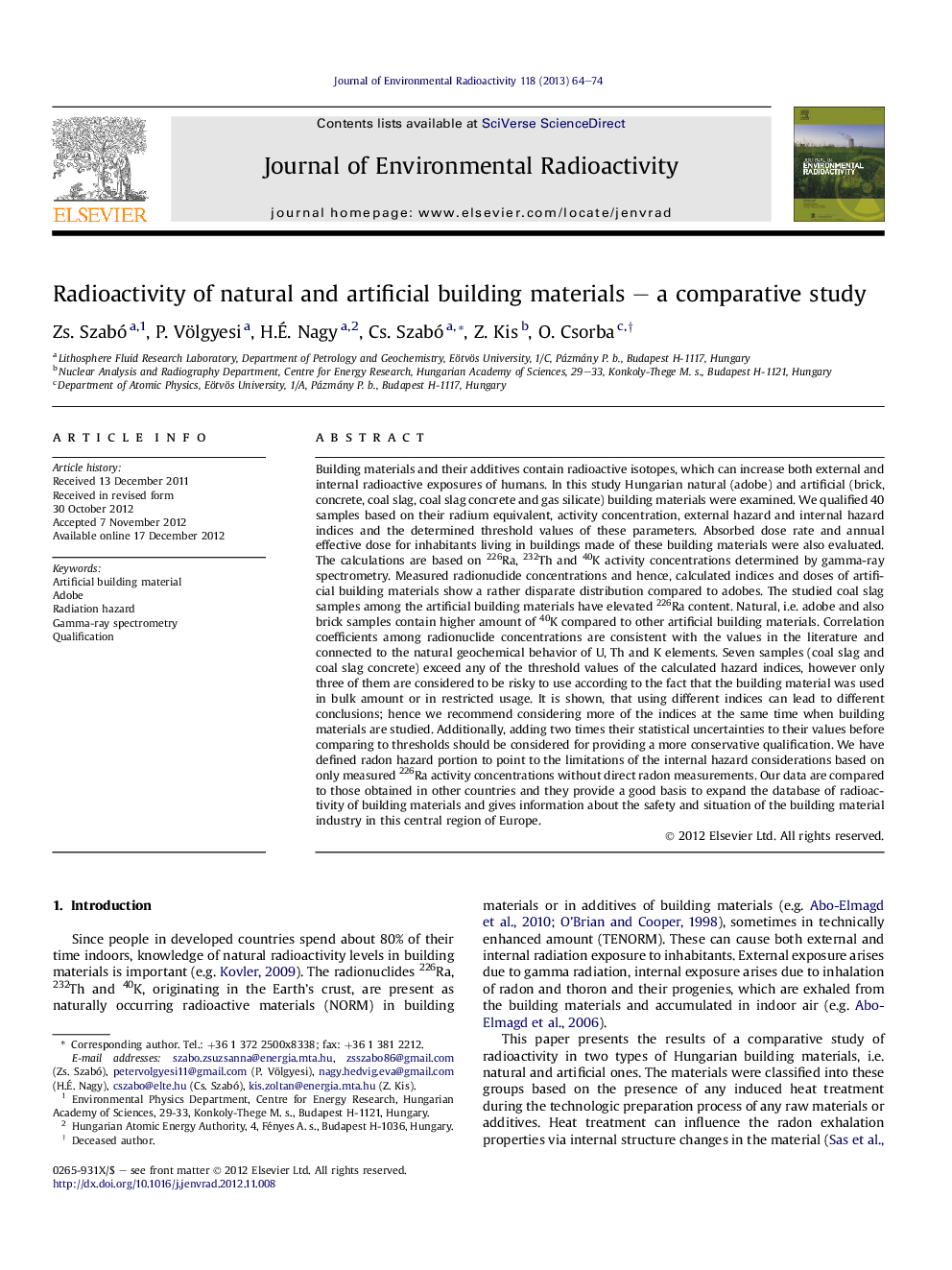| Article ID | Journal | Published Year | Pages | File Type |
|---|---|---|---|---|
| 1738210 | Journal of Environmental Radioactivity | 2013 | 11 Pages |
Building materials and their additives contain radioactive isotopes, which can increase both external and internal radioactive exposures of humans. In this study Hungarian natural (adobe) and artificial (brick, concrete, coal slag, coal slag concrete and gas silicate) building materials were examined. We qualified 40 samples based on their radium equivalent, activity concentration, external hazard and internal hazard indices and the determined threshold values of these parameters. Absorbed dose rate and annual effective dose for inhabitants living in buildings made of these building materials were also evaluated. The calculations are based on 226Ra, 232Th and 40K activity concentrations determined by gamma-ray spectrometry. Measured radionuclide concentrations and hence, calculated indices and doses of artificial building materials show a rather disparate distribution compared to adobes. The studied coal slag samples among the artificial building materials have elevated 226Ra content. Natural, i.e. adobe and also brick samples contain higher amount of 40K compared to other artificial building materials. Correlation coefficients among radionuclide concentrations are consistent with the values in the literature and connected to the natural geochemical behavior of U, Th and K elements. Seven samples (coal slag and coal slag concrete) exceed any of the threshold values of the calculated hazard indices, however only three of them are considered to be risky to use according to the fact that the building material was used in bulk amount or in restricted usage. It is shown, that using different indices can lead to different conclusions; hence we recommend considering more of the indices at the same time when building materials are studied. Additionally, adding two times their statistical uncertainties to their values before comparing to thresholds should be considered for providing a more conservative qualification. We have defined radon hazard portion to point to the limitations of the internal hazard considerations based on only measured 226Ra activity concentrations without direct radon measurements. Our data are compared to those obtained in other countries and they provide a good basis to expand the database of radioactivity of building materials and gives information about the safety and situation of the building material industry in this central region of Europe.
► Radionuclide content and various hazard indices of 40 building materials are studied. ► Data are compared to each other and to results obtained in other studies. ► Radon hazard portion is defined. ► Seven samples exceed any of the thresholds, but three is considered to be hazardous.
